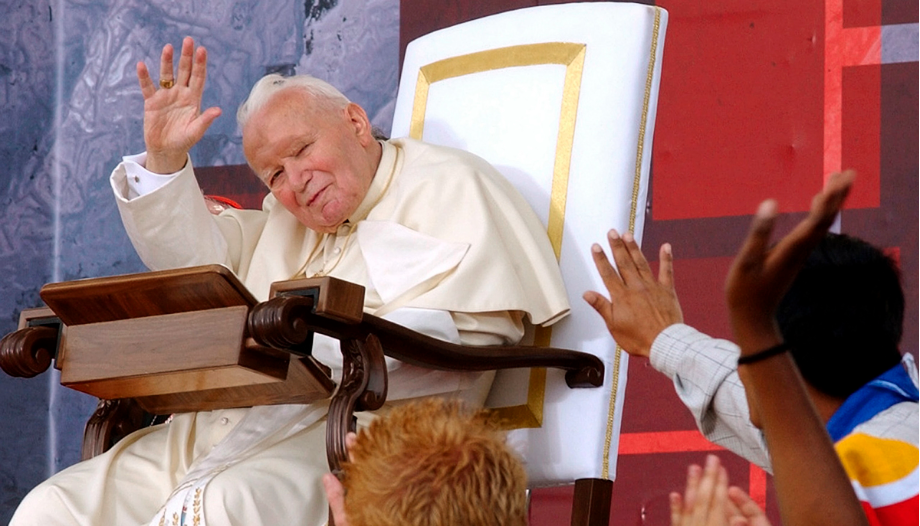 Fyodor Dostoevsky (1821-1881): In Search of God and Beauty
Fyodor Dostoevsky (1821-1881): In Search of God and Beauty Dante's Divine Comedy
Dante's Divine Comedy "The Lusiads", by Luís de Camões
"The Lusiads", by Luís de CamõesIn 1996, St. John Paul II celebrated 50 years of priesthood. On the occasion of that anniversary, the Polish Pope shared with us the exciting story of his vocation. He did so in a book that was personal, intimate and - something for which we are always grateful - also short. It is entitled "Gift and mystery".
In addition to already being a classic of the spiritual witness genre, this book is dear to me - pardon the personal aside - because I read it at two key moments in my life: for the first time in 2018, while I was finishing my decision on whether or not to park the law degree I had received shortly before and enter the Seminary. The second time was a few months ago, as I was discerning my final decision. As you can see, the witness of St. John Paul II has accompanied me at crucial moments in my life. This November 19, when I will be ordained a deacon, and next May, when I will be ordained a priest, among the many people who have helped me in my life, I will also remember to thank St. John Paul II.
What is the priesthood?
The title of the book answers the question "What is the priesthood?" Well, that is, the priesthood is a gift and a mystery. Now, how can we know if we have received a gift, when that gift is also a mystery? This time the answer requires a combination of thought and life, for words fall short. This is why the testimony of St. John Paul II is so valuable in helping us to approach the solution to the paradox.
Let's zoom in on the year 1942. The forces of the Third Reich occupy Poland, the Nazis persecute Jews and Catholics, and a 22-year-old Karol Wojtyła is entering the clandestine Seminary of Krakow (i.e., the Archbishop's residence) to prepare his way to the priesthood. It will be a time of growth and also of fatigue, because, in parallel to the ecclesiastical studies, Karol goes to work in a stone quarry to avoid being transferred to another worse work camp.
Persecution and fear formed the backdrop of the time: in those horrifying years of World War II, 20% of the Polish population died and 3,000 Polish priests were murdered in Dachau. In such an adverse scenario, how was this young 22-year-old Polish man able to give his life to God?
The family wound
Little by little we learn that Karol underwent a painful preparation. When he was 9 years old he lost his mother, some time later he lost his older brother and, a year before he entered the Seminary, he also lost his father, whom he loved so much. However, it is remarkable to see how the Pope recalls his whole life with gratitude, because he is able to see God behind his biography: he looks more at the presences than at the absences and assures that his family was decisive in his faith journey. His father, for example, with whom he grew up in a climate of close trust and warmth, was a military man by profession and a deeply religious man.
John Paul II recalls: "Sometimes I would wake up at night and find my father kneeling, just as I always saw him in the parish church. There was no talk of a vocation to the priesthood among us, but his example was for me, in a way, the first seminary, a kind of seminary. domestic".
In the midst of the debacle among peoples, Karol had the inner strength to break out of the molds of history. While hatred reigned outside, inside this young seminarian a radical vocation to Love germinated: in his youth he grew in intimacy with God, made lasting friendships, practiced theater and even wrote poetry. "My priesthood, already from its birth, has been inscribed in the great sacrifice of so many men and women of my generation," he says. When the war ended, Karol moved to the regular seminary, and on November 1, 1946, he was ordained to the priesthood.
Esperanza
In "Gift and Mystery" we enjoy a story full of supernatural optimism, in which we can glimpse the magnanimity of a man of God, the refinement of a priest in love with Jesus Christ; and we can understand the attraction that a life like his has on the vocational discernment of an ordinary life like mine, or in the enthusiasm that he continues to awaken in my Polish colleagues in the Faculty of Theology, or in the renewed hope that he arouses in so many people of my generation.
The life and vocation of St. John Paul II are marked by contrasts. To understand the coexistence between happiness and pain in a life, the relationship between gift and mystery in a vocation, it is necessary to read this book quietly, close it from time to time and meditate: indeed, we then say to ourselves, the vocation to the priesthood is above all a wonderful gift from God, and we understand it better when a saint like John Paul II has accepted this gift, embodies it, is grateful for it and then generously communicates it to us, as he continues to do through these moving memoirs.











